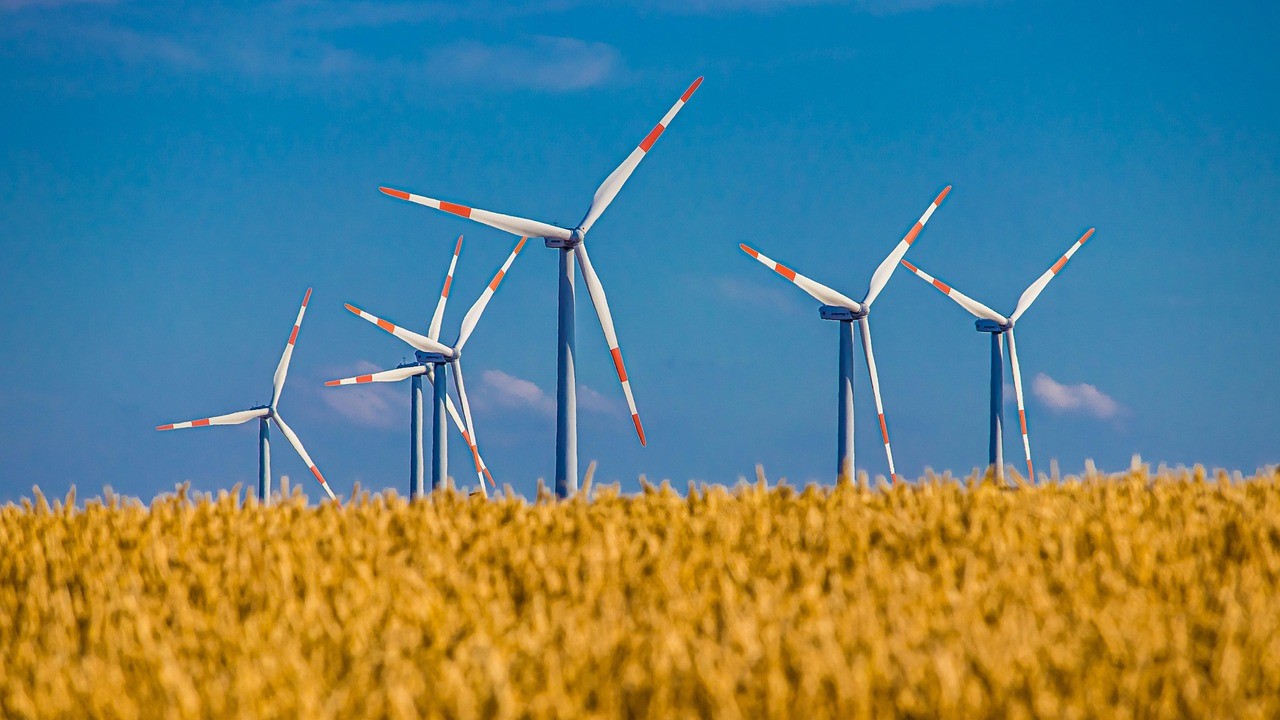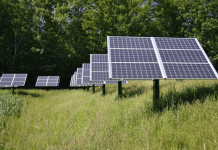Clean energy technology is pivotal in addressing global climate challenges.
This article explores seven groundbreaking innovations driving a shift toward a sustainable future, from solar advancements to wind power solutions, promising reduced emissions and increased efficiency.
Join us as we delve into these remarkable advancements, reshaping our energy landscape and paving the way for a greener tomorrow.
Solar Energy Advancements
Recent advancements in photovoltaic technology include high-efficiency solar cells like tandem and perovskite variants, along with flexible thin-film panels and bifacial solar panels for increased energy capture.
The Impact of Solar Energy Storage Solutions
Solar energy storage solutions are revolutionizing how we harness and use solar power. Here are the key impacts:
- Energy Independence: Solar storage ensures energy availability during cloudy days or at night, reducing grid dependence.
- Grid Stability: It alleviates peak demand, enhancing grid reliability and mitigating blackouts.
- Cost Savings: Stored solar energy during peak rates cuts electricity bills, yielding financial savings.
- Environmental Benefits: Solar storage reduces emissions, promoting clean energy use, even without sunlight.
- Remote Access: It provides off-grid power, aiding remote and disaster-affected regions.
- Scalability: Solutions quickly adapt storage capacity to changing needs.

Wind Power Innovations
Wind power innovations continue to shape the renewable energy landscape, offering sustainable solutions for our energy needs. Here are some notable advancements in wind power technology:
- Larger Turbines: Wind turbines are growing with bigger rotors and taller towers to capture more wind energy efficiently.
- Offshore Wind Farms: Offshore wind harnesses solid and consistent winds, significantly expanding clean energy generation potential.
- Smart Grid Integration: Advanced control and grid technologies optimize wind farm performance and enhance reliability.
- Energy Storage: Combining wind power with energy storage systems ensures a stable energy supply by storing excess power when needed.
- Hybrid Systems: Wind-solar and wind-diesel hybrid systems provide reliable energy solutions, particularly in remote areas where grid access is limited.
These innovations are driving the growth of wind power as a clean and sustainable energy source, contributing to a greener future.
Energy Storage Breakthroughs
Energy storage breakthroughs are pivotal in enhancing the reliability and effectiveness of renewable energy sources. Here are some significant advancements in energy storage technology:
- Solid-State Batteries: They offer higher energy density, longer lifespan, and enhanced safety versus traditional lithium-ion batteries.
- Grid-Scale Storage: Innovative solutions, like pumped hydro storage and advanced flywheels, stabilize the grid and support renewable integration.
- Advanced Materials: Graphene and nanomaterials are explored to enhance battery performance and storage.
- Thermal Storage: High and low-temperature systems boost energy capacity and efficiency, especially in industries.
- Flow Batteries: Vanadium and zinc-bromine types provide scalable, durable storage for residential and industrial use.
- Hydrogen Energy Storage: Solid-state and chemical hydrogen technologies promise large-scale storage and transportation.
- Second-Life Batteries: Repurposing used EV batteries for stationary storage extends their lifespan and reduces waste.
These energy storage breakthroughs are pivotal in enabling the widespread adoption of renewable energy sources and transforming the energy landscape towards sustainability.
Hydrogen Fuel Cell Technology
Hydrogen fuel cells efficiently produce electricity with zero emissions, promising a cleaner energy future for transportation and power generation.
Here are key developments in this field:
- Improved Efficiency: Ongoing research has increased fuel cell efficiency, enhancing hydrogen's viability as an energy source.
- Green Hydrogen Production: Renewable energy-powered electrolysis techniques produce green hydrogen, reducing carbon emissions.
- Fuel Cell Vehicles: The automotive industry is developing hydrogen-powered vehicles with longer ranges and faster refueling times.
- Hydrogen Infrastructure: Expanding hydrogen refueling stations and pipelines is vital for supporting a hydrogen-based transportation system.
- Stationary Applications: Fuel cells are used for backup power, grid balancing, and static energy generation, reducing reliance on fossil fuels.
These advancements drive the adoption of hydrogen fuel cell technology as a cleaner and more sustainable energy solution for various applications.
Geothermal Energy Innovations
Geothermal energy innovations bring increased efficiency, reduced environmental impact, and expanded resource access.
They offer a sustainable and reliable clean energy source, promote energy independence, and stimulate economic growth in geothermal-rich regions, advancing the transition to greener energy systems.
Advancements in Enhanced Geothermal Systems (EGS)
Enhanced Geothermal Systems (EGS) represent a pioneering approach to harnessing the Earth's heat for clean energy. Here are the top 5 advancements in EGS technology:
- Fracturing Techniques: Improved hydraulic fracturing methods create permeable pathways for heat transfer in geothermal reservoirs.
- Stimulation Technologies: Enhanced stimulation technologies, like thermal and chemical methods, boost reservoir permeability and heat extraction.
- Advanced Drilling: Innovations in drilling technologies enable access to more profound and hotter geothermal reservoirs, expanding the potential for EGS.
- Reservoir Management: Enhanced reservoir monitoring and control systems optimize heat extraction and increase the efficiency of EGS projects.
- Geophysical Exploration: Improved geophysical techniques help identify suitable EGS sites and assess the geothermal resource's viability.
These EGS advancements unlock vast geothermal potential and advance clean, sustainable energy sources.
Wave and Tidal Power
Ocean waves and tides are used for energy generation via wave energy converters and tidal turbines, capturing kinetic energy and converting it into electricity.
These technologies harness the perpetual motion of waves and predictable tidal cycles for sustainable, clean energy.
The Challenges and Potential of Harnessing Marine Energy
Harnessing marine energy presents both challenges and significant potential for clean power generation. Here's an overview:
Challenges:
- Harsh Marine Environment: Marine energy systems must withstand corrosive saltwater and extreme weather conditions.
- High Capital Costs: The development and deployment of marine energy technologies require substantial upfront investments.
- Environmental Impact: Mitigating potential harm to marine ecosystems is crucial when installing these systems.
Potential:
- Abundant and Predictable: Oceans offer a vast, consistent renewable energy source.
- Low Greenhouse Gas Emissions: Marine energy systems produce minimal carbon emissions.
- Energy Security: Diversifying energy sources with marine energy contributes to greater energy security.
Innovative Technologies in Wave and Tidal Power
Innovative technologies in wave and tidal power are driving the advancement of clean and reliable marine energy solutions. Here are some notable developments:
- Wave Energy Converters (WECs): Innovative designs, such as point absorbers and oscillating water columns, efficiently capture energy from ocean waves.
- Tidal Stream Turbines: Advanced turbine technologies, including horizontal and vertical-axis turbines, harnessing tidal currents' kinetic energy.
- Overtopping Devices: These converters use reservoirs to collect and release water, generating power as it returns to the sea.
- Advanced Materials: Durable materials like composites and anti-corrosion coatings improve marine energy system longevity and performance.
- Grid Integration Solutions: Smart grid tech integrates wave and tidal power into existing electrical grids, enhancing their viability as reliable clean energy sources.
Biomass and Bioenergy Developments
Biomass is a crucial resource for clean energy production, involving converting organic materials like wood, agricultural residues, and waste into electricity, heat, and biofuels through combustion and gasification.
It is carbon-neutral, as emissions are offset by carbon absorption during plant growth. It provides reliable, sustainable energy, reduces waste, and contributes to cleaner energy systems.
Advancements in Bioenergy Technology
Advancements in bioenergy technology within the Biomass and Bioenergy sector are transforming the landscape of renewable energy production. Here, we explore vital breakthroughs that drive cleaner and more efficient energy solutions.
- Advanced Feedstocks: Non-food crops and waste materials as sustainable biomass sources.
- Thermochemical Conversion: More efficient biomass-to-biofuels via gasification and pyrolysis.
- Biological Conversion: Improved microbial and enzymatic processes for higher biofuel yields.
- Integrated Biorefineries: Efficient extraction of multiple products from biomass.
- Algae Biofuels: Promising, high-yield renewable energy source with reduced land use.
- Carbon Capture: Tech to capture and use emissions, enhancing environmental friendliness.
Conclusion
In conclusion, these groundbreaking innovations in clean energy technology revolutionize our energy landscape, offering a sustainable future.
From ocean wave harnessing to solar cell enhancements, they address climate change and bolster energy security.
Embracing these innovations demonstrates our potential for a cleaner, more sustainable world through ongoing research and global cooperation, leading to substantial emissions reduction and environmental mitigation.



